How to ‘leave no trace’ when pitching or hiking in the backcountry
Our guide on how to tread lightly and leave no trace when camping, so that the trails are left unspoilt for generations to come
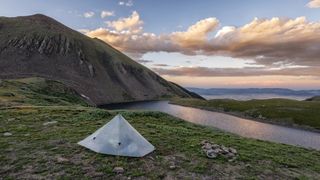
The principles of 'leave no trace' need to be reinforced now more than ever. While humanity is becoming increasingly aware of the urgent need to protect the planet, more and more of us are seeking out the wild places in search of mindfulness, escapism and adventure.
Increased numbers on coast paths and mountain trails is something of a double-edged sword. On one hand, more people experiencing nature and backcountry regions leads to a greater appreciation for our precious wild places, as well as a greater collective urge to protect them. However, in the short term, it puts more strain on these places and those that are unaware of how to properly preserve them could be doing significant harm.
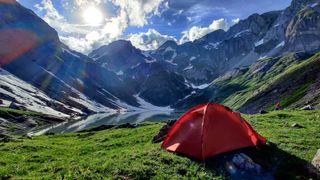
This is why the leave no trace movement is as pertinent as ever. When we take our camping tents into the wild, it's vital we adhere to its principles and share them with others too. Even better, we can actively improve the areas we explore by doing things like picking up any discarded trash we discover and packing it out with us.
To help ensure that our beautiful wild places are still just as unspoilt for the hiking boots of future generations, we at Advnture have put together this guide on how to leave no trace when camping.
Leave no trace – a matter of principle
Most outdoor-focused people and organizations agree on seven ‘leave no trace’ principles, as enshrined in 1999 by the Leave No Trace Center for Outdoor Ethics:
- Plan ahead and prepare
- Travel and camp on durable surfaces
- Dispose of waste properly
- Leave what you find
- Minimise campfire impacts
- Respect wildlife
- Be considerate of other visitors
Depending on your point of view and experience in the outdoors, these might either sound like self-evident and blindingly obvious statements, or impossibly abstract, demanding or even pious ideals.
But regardless of whether you’re going in green, or have spent decades wandering around the wilderness, it’s worth exploring each of these leave no trace principles. With a bit of forethought, they’re not that hard to live by. Really. And if everyone strives to adhere to them better, the outdoors will stay great for a whole lot longer.
Advnture Newsletter
All the latest inspiration, tips and guides to help you plan your next Advnture!

Leave no trace – preparation
Knowing how to plan a backpacking adventure can make sticking to the leave no trace principles much more straightforward. Many people mean well, but fall short of good leave no trace behaviour because of poor planning. Even if the ‘you carried it in, so carry it out’ principle covered below is obvious, proper preparation is key. It’s a lot easier to live the ideal if you’ve got a (preferably reusable) leak-proof bag to put all your rubbish in. I carry an old, two-litre lightweight sealable dry bag which can hang outside my pack till I reach a rubbish bin. It has become one of my hiking essentials.
Research and invest in eco-sensitive products, such as biodegradable soaps. Get skilled up and learn how to read a map and how to use a compass, so you don’t lose the path and end up crashing around and creating another one. If you're setting out on a camping trip, use a camping checklist so that you don't forget anything that will help you adhere to the leave no trace principles.

Make minimal or no changes to the environment
Take nothing but photographs is one of the classic phrases often bandied about in the outdoors. However, its what you do unknowingly that can have a greater effect on the environment.
There is a romance to the concept of trail blazing, but if a track already exists, please stick to it. Smashing multiple new paths through an area is extremely damaging to the environment and can lead other people off the beaten track and into potential danger. Also, it’s hard work. Do you really need that machete?
Another unwitting mistake many people make is walking along the grassy verge on the edge of a path. We get it, after a long day's hiking, sometimes the feel of spongy turf under your feet is preferable to the hard rocky trail. On busy hills, like Snowdon in the Wales' Snowdonia National Park or Cat Bells in the English Lake District, sometimes taking to the verge might be seen as a good way of getting around that infuriatingly slow hoard taking up the entire trail in front of you.
However, treading on the verge leads to path erosion, which leads to ever-widening paths and a greater blot on the landscape. Once the path is widened, others will follow and a vicious cycle begins. If you value neat and tidy trails that wind up the hillside, rather than motorways that tear up their flanks, stick to the path.
A similar approach is true for camping spots – if you find one that’s already been used, it makes sense to avail of it again. Knowing where not to camp, in terms of your own enjoyment and your environmental impact, comes with experience. Sometimes, in popular areas and in busy seasons, you’re most invisible and leave the least traces if you moderate your rugged individualism and use a designated low-key campsite with fire circles, toilets and perhaps (if you’re lucky) even rubbish bins. Knowing how to pitch a tent correctly will also help you to get the most out of the experience.
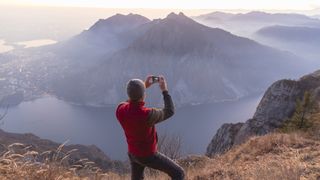
Carry in, carry out
As per above, this might seem obvious, but it’s a whole lot easier to adhere to if you’re prepared and have the right containers to comfortably and hygienically stash and carry all your waste. Get into the habit of sweating the small stuff – carry out everything from orange peel upwards. It’s the super-hero way. Some fragile ecologies demand, both legally and morally, that you carry out everything (and that does mean everything, including toilet paper and human waste, in a Zip-lock bag or similar, just like you would – or should – with a dog-poo bag).
A growing trend goes a step further than just taking your own rubbish away. Many hikers now set off into the trails armed with rubbish pickers and bags, so that they not only leave no trace but improve the environment by removing other people's litter. Can you imagine if everyone did this? We would say goodbye to those pesky cigarette butts and banana skins forever.
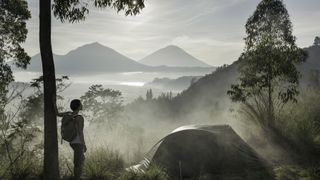
Avoid fragile ecologies
Reading up about the wildlife (both flora and fauna) in an area you’re planning on visiting will enhance the experience massively, and allow you to avoid visiting fragile places at times of particular stress (the later trip will be all the more special if you and others follow this principle). While you indulge in a spot of nature watching, be especially mindful of ground-nesting birds. As before, stick to paths and bring a pair of binoculars to enable you see the wildlife up close. If you’re walking with a dog, this is all even more important – keep your animal on a leash.
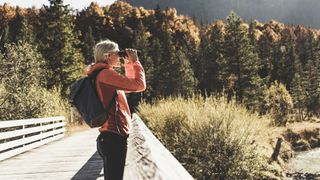
Zero the effects and risks of fire
Attitudes to campfires have had to change as the outdoors has become more popular. In many circumstances you, and the environment, are going to be far better off using some kind of ‘tamed’ fire option; gas, multi-fuel or a twig-and-pine-cone–burning stove.
But there are still opportunities for kindling the magic of campfires in the right places. Don’t build a campfire on or near vegetation, nor on peaty or dry soil; use a fire ring or old fire spot if there is one; burn the fire down to fine ashes; extinguish thoroughly with water and then disperse the ashes. Importantly, keep fires within a couple of twigs of the smallest size needed to cook on, or then feed sparingly with dead wood for the low flicker of firelight for whiskey and storytelling atmosphere after eating.
If you do have a fire, don’t burn rubbish, whether its tins, plastic or waste food. It’s basic chemistry; burning doesn’t magically disappear stuff but just changes it into something else, equally unpleasant or dangerous. And the same goes for burying your waste.
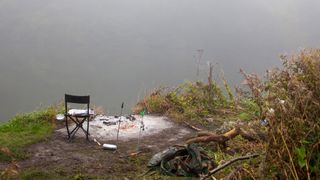
Respect for living things
No matter how off-grid and into-the-wild you’ve gone, you’re not alone. The wilderness teems with life and everything has its place within a delicate biosphere. Don’t disturb the local wildlife, even out of benign curiosity. Just look – get a photograph if you see something special – but don’t interfere. Remember, take nothing but photos.
Consideration
This is a broad one, which starts before the trailhead (with good planning) and extends far beyond it. At the outset of an adventure, when considering where to leave your vehicle (if you have one – extra kudos if you’ve managed to get there by public transport), don’t block other people’s access and give them a reason to impact the environment by taking alternative routes. While on the trail and setting up camp, constantly consider the consequences of your presence and try not to negatively impact wildlife or the experience of other visitors in terms of everything from making unnecessary noise to reckless toileting and careless habitat damage.
Avoid exploring in large gangs – split up into smaller groups and rendezvous at picnic spots along the way. Use a tent proportional to your requirements, which has an appropriate profile (not something the size of the Taj Mahal covered in lurid colours, which will be a blot on the landscape while it’s up). If you're alone, a one-person tent will suffice and a 2-person tent is the maximum size you could ever need.
When camping, wash-up and clean your teeth well away from streams and lakes (using biodegradable products). If you're intent (excuse the pun) on wild camping, you should pitch late in the day and pack up close to dawn. Oh, and that thing that bears – and you – do in the woods? That’s a whole subject in itself, but paramount is picking a location far from any water source and well away from anywhere anyone else might walk. Most outdoor advocates go with the idea of digging a 6-inch deep ‘cat-hole’. Purists suggest using ‘natural’ wipes (like leaves, rocks or sticks). Realistically, most of us are going to be happier with plain old paper but opinions disagree about burning it afterwards; if there’s any fire risk, then don’t and instead pack it out.
After your adventure, clean your boots and poles before visiting different areas – otherwise you can spread damaging pathogens damaging to local flora.

Embrace open-air living – but do your chores
It’s an uplifting and simple idea. With that mindset leaving no trace is mostly about not setting the house on fire, doing the washing up, making the bed and not upsetting the neighbours. Oh and, importantly, taking the rubbish out.
The outdoors is being enjoyed by more people all the time, particularly in a post Covid19 world, with overseas travel declining and domestic adventuring on the rise. Despite some of the distressing scenes seen after the end of the 2020 lockdown, this is a positive development – memories made outdoors are enduring, can be passed down generations and give us all a bigger reason to fight for greater protection of wilderness areas. In response to this, Visit Scotland recently felt obliged to launch a new responsible tourism campaign to raise awareness of the importance of exploring the outdoors responsibly. But it also makes it even more important that the right principles do need to be followed, otherwise the environment we all love to explore will quickly be ruined.
With the old-school approach to nature, ones every trip into the countryside was seen as a struggle with a hostile environment and so a bit of rubbish or fire damage along the way was just so much collateral damage in the ‘fight’ to survive.
Scandinavians – who know a thing or two about extremes of weather, remote country and comfortable camping – have a very different approach. The concept of friluftsliv literally means ‘open-air living’. And so the embracing of friluftsliv means you experience your camping spot as outdoor rooms, whether that’s a kitchen, bathroom or bedroom.
After a wild childhood in west Cork, Jasper Winn began embarking on long cycles, walks, horse journeys and kayak trips across five continents – adventures he’s decanted into books, magazine articles, radio and television documentaries. Keen on low-tech but good gear, Jasper is an advocate of slow adventures by paddle, pedal, saddle, boot and sail. He has circumnavigated Ireland by kayak and cycled across the Sahara. Twice. Having ridden north-to-south across Algeria he discovered the only way to get back was to turn round and pedal north again.

